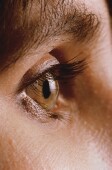
MONDAY, Aug. 8 (HealthDay News) — Frequent visual field testing may help doctors detect progression of the eye disease glaucoma at an earlier stage, a new study says.
It’s important to identify patients whose disease is progressing faster so that they can receive more aggressive treatment or more frequent follow-up, the researchers explained.
Their study, published online Aug. 8 in the journal Archives of Ophthalmology, included 381 glaucoma patients, aged 35 to 80, who were followed for anywhere from about 3 to 13 years. Glaucoma progression was more likely to be detected in patients who had more visual field tests (a median of 20) than in those with fewer tests (a median of 12).
“In summary, we found that a twice-yearly schedule of visual field testing resulted in earlier detection of glaucoma progression compared with a yearly schedule, especially with global trend analyses,” wrote Dr. Kouros Nouri-Mahdavi and colleagues at the Jules Stein Eye Institute at the University of California, Los Angeles, in a journal news release.
“Validation of these findings in other patient populations would be desirable. Our results have significant health care policy implications with regard to determining the frequency of visual field testing in patients with glaucoma,” they added.
One expert agreed that more frequent testing would end up helping patients.
“Glaucoma is one of the leading causes of blindness worldwide,” noted Dr. Mark Fromer, an ophthalmologist at Lenox Hill Hospital in New York City. “Left untreated, patients will suffer a permanent loss of vision. This disease is treatable with both topical medications, laser therapy and microsurgery.”
He said the new study “has wide implications for the detection of disease in millions of patients.”
More information
The U.S. National Eye Institute has more about glaucoma.

